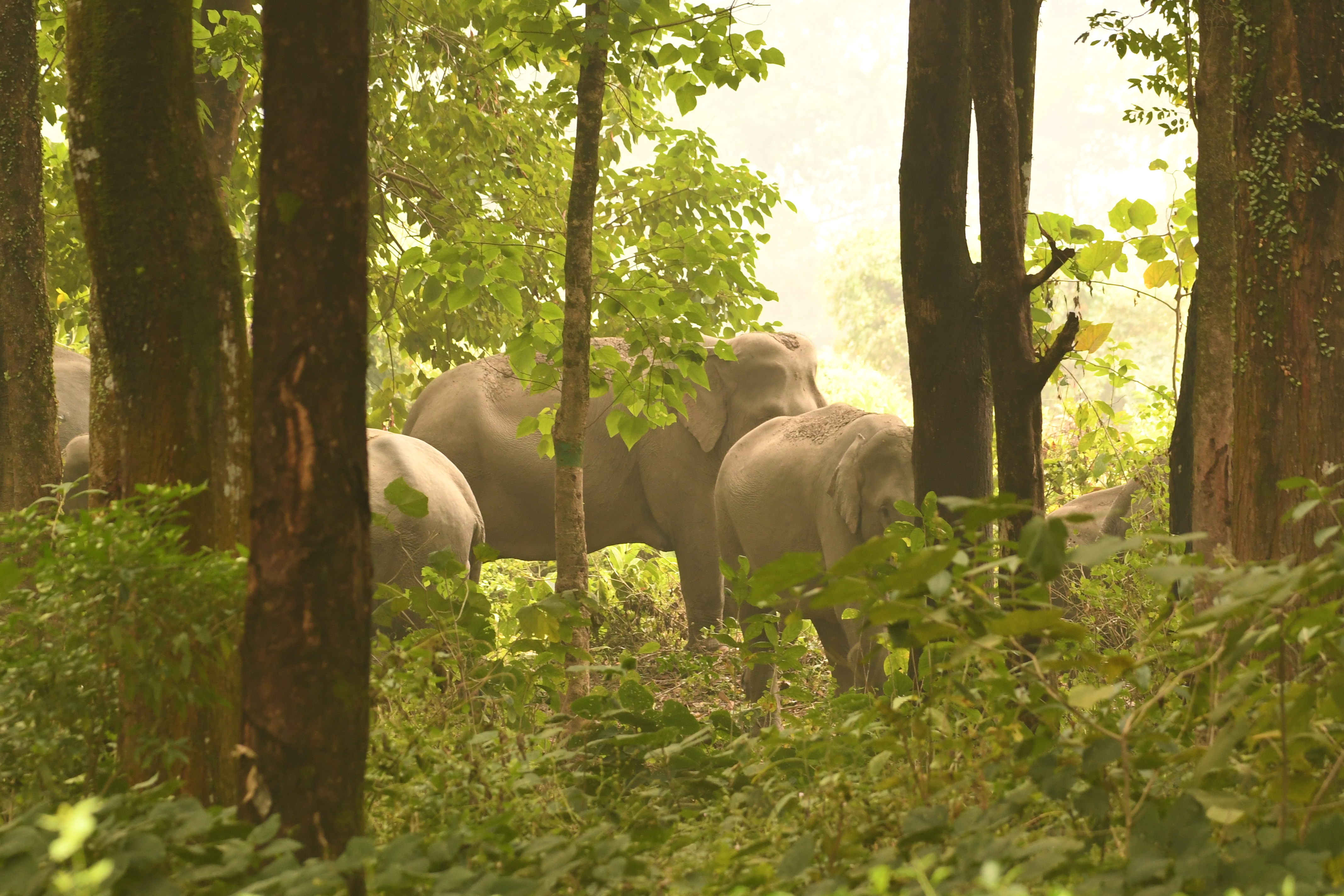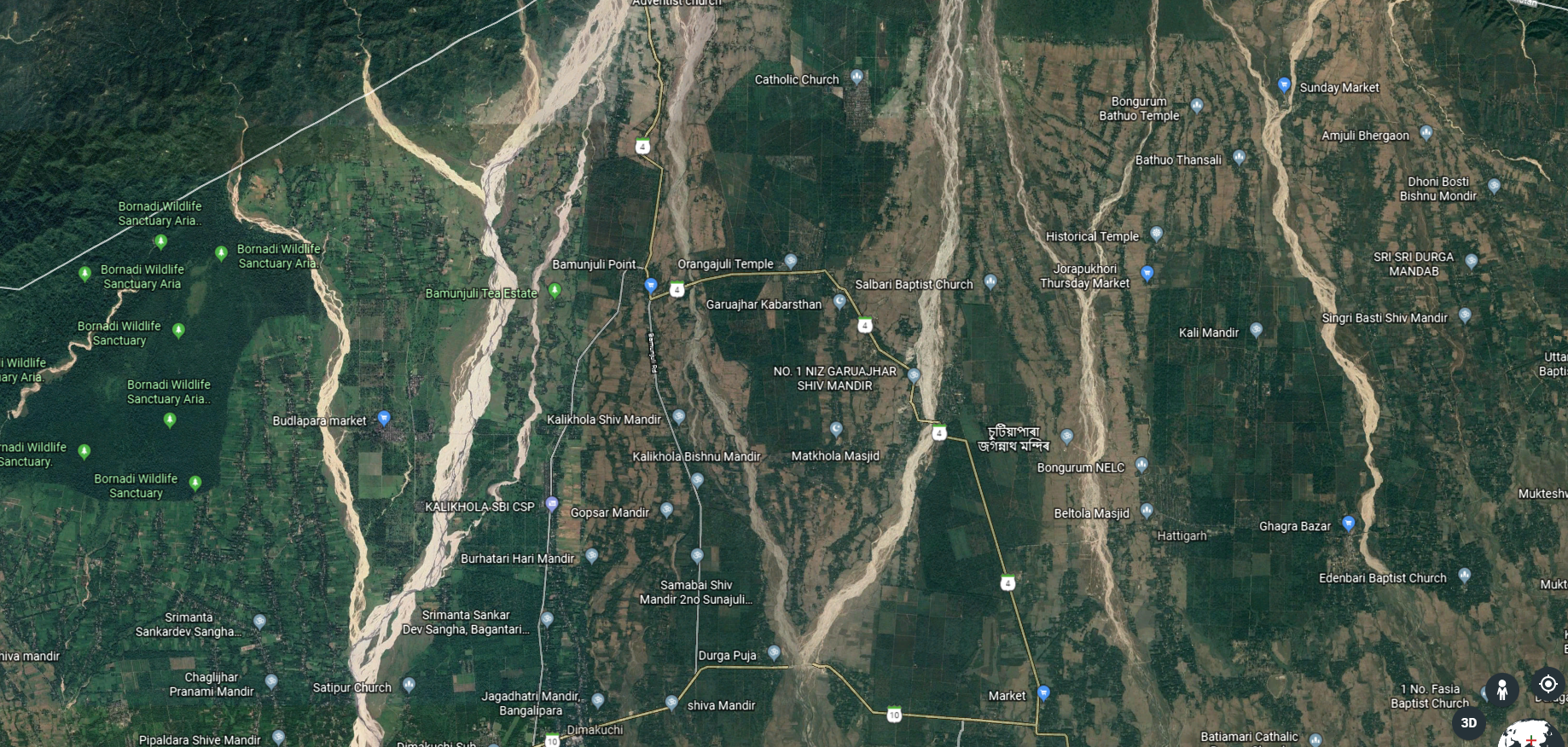Reducing HEC in Udalguri
A mission impossible?
We at NWA do not think so!
To find information to analyse the problems on hand and their implications,
NWA team members started to collect data in early 2018. Based on the
collected data, NWA is now developing a tailor made action plan.

The Background:
Udalguri districts high intensity Human Elephant Conflict zone is located
north of Paneri and Dimakuchi, along the Bhutanese border. With a total area
of around 100 square kilometres and at least 21 human death as well as many
human injuries , destroyed houses and a number of elephant death’s in 2018,
this is the highest HEC density landscape in the world.


Facts related to HEC:
- Existing habitat areas are completely (95%+) overgrown by alien invasive
plant species like Lantana Camera, Chromolaena Odorata and others.

this means, there is absolutely no food (grass) for wild elephants.
2. Large number of cattle are present in the forested areas.

These are competing with elephants for any remaining food.
3. Even so there is vast wasteland areas outside, cattle can not find food
there as these areas are also overgrown with invasives.

4. Activists have introduced the idea to feed bananas and banana trees
salt and other food to elephants in and around the villages.

This is crazy! they are inviting elephants into human areas!
5. Tea gardens are providing “safe” areas as shelter for elephants
during the day.

On first look, a good idea to protect these elephants, but looking at the
facts, almost all human death occur inside and right next to these
tea gardens. Having these “safe areas” scattered between the villages
means providing them with staging points for crop-raiding. It also means,
that there are hundreds of points, next to human settlements, where
elephants suddenly appear, making it impossible to control the problem
with anti depredation teams.

6. Villagers, fearing the loss of their crop and livelihood as a result, are very
violent against elephants in their efforts to protect their farm land.
All elephants seen have multiple human inflicted injuries!

The result is, that elephant are very aggressive if they encounter humans.
There are around 50 resident elephants in the area, but during paddy harvest season,
October to December, about 250 migrant elephants possibly from the Manas area are
getting involved in the area.
NWA Action Plan Proposal:
Nature & Wildlife Association is now working on a comprehensive proposal to
reduce Human Elephant Conflict in the area both short and long term consisting
of various components involving all stakeholders.
The underlying principle should be to separate humans and elephants.
Bring the elephants back into their natural habitat by providing enough food and
eliminating all disturbances and discourage them from entering human areas.
- Large scale habitat restoration inside forested areas, creating sufficient
food for herbivores.
2. Large scale restoration of wastelands to provide food for cattle and keep
the cattle out of the elephant habitat.
3. Awareness drive to urgently stop the practice of providing food to elephants
outside the protected areas.
4. Engage with tea garden management to find ways to keep elephants out of
the tea gardens during the day, with the aim to contain them in the
protected areas.
5. Set up well trained and equipped elephant depredation teams to mitigate
crop raiding attempts.
6. Awareness meetings to explain soft mitigation and improve general
understanding of HEC to the affected communities.
7. Set up a HEC reporting system using whats-app.
8. Assist affected communities in case of HEC.
9. Cooperate with Village Defence Party members, Police and Forest
Department to organise crowd control measures.
10. Collect sufficient data to establish the origin of the migrant elephants
11. Create a database of all elephants active in the Udalguri landscape.
12. Find additional HEC related information and apply where suitable.


What a great work from NWA to re balance the situation 🙏